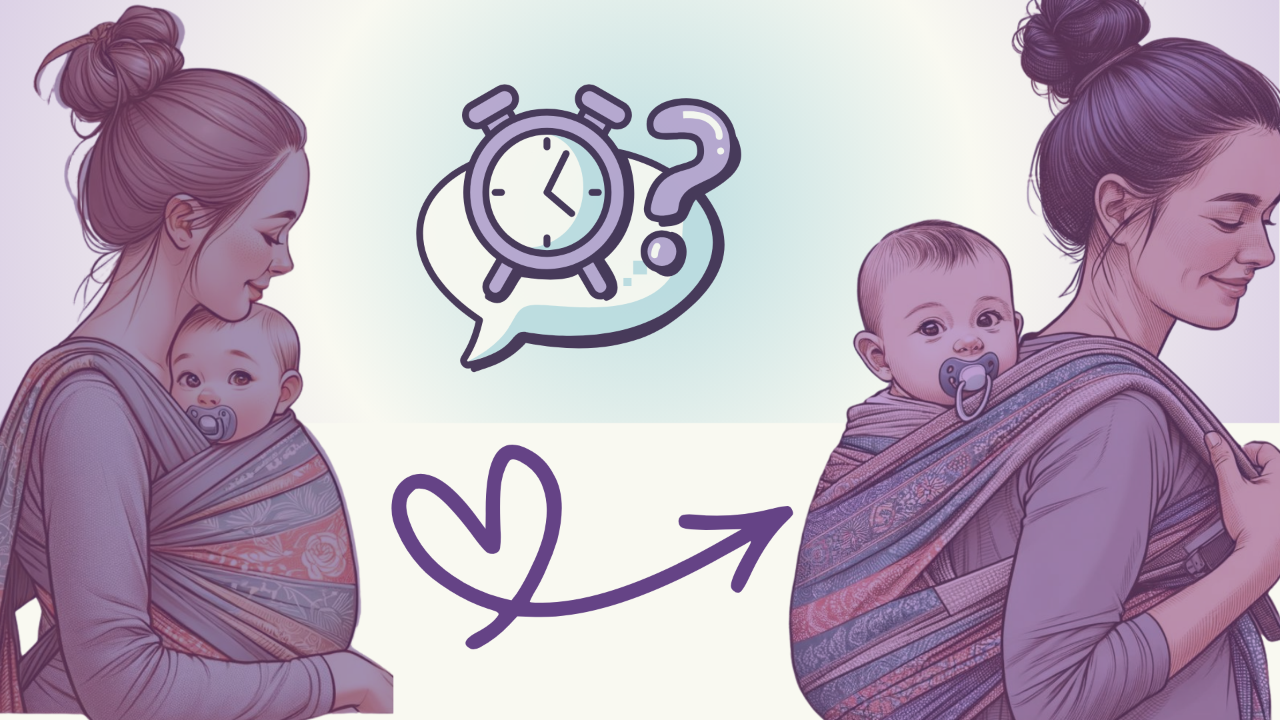When Is It ‘OK’ to Carry a Baby on the Back?
Jan 14, 2025
Have you ever found yourself wondering about this question—or fielding it from curious caregivers? If you’re in the babywearing world, chances are you’ve encountered it more than once.
It’s a question that sparks a lot of debate in my classes.
Where Did This "Rule" Come From?
Where did the idea that a baby must “sit independently” before being carried on the back even start? When I had my first baby back in 2004, this wasn’t a rule. Back then, it was more of a “do what feels right for your family” kind of era—a bit of a free-for-all, really.
And let’s not forget that around the world in both active and ancient cultures, back-carrying might begin as early as 6 weeks postpartum.
I believe this “rule” has its roots in soft-structured carrier manufacturing. Its part of the company trying to CYA - you know, legally cover themselves in case of an incident. Maybe it’s because their carriers don’t work well for smaller babies on the back. They should know their carrier the best after all.
Or maybe it comes from personal choice, and then word of mouth, it just became something that stuck, passed along as best practice without much thought to its origin.
But does it really matter where the rule came from? What matters more is whether it’s serving the caregivers we work with today.
Does This Rule Serve Caregivers?
Here’s a scenario I hear frequently: a parent wants to start carrying their 5-month-old on their back. Maybe their baby is big for their age, or they’re dealing with discomfort from front carrying and need a break, or they have another need to move baby to the back.
Is it helpful to tell that parent, “Sorry, you need to wait until your baby is sitting independently”?
Or could we approach the conversation differently? Could we say, “Yes, let’s figure out how to make this work. The manufacturer of the carrier you have recommends waiting until XYZ, so we might need to explore other options. Would you be open to that?”
The truth is, not every baby sits independently at the same time. For some, it may take months longer than others. Are we really going to make parents wait that long, struggling with pain or discomfort, when a safe and effective back carry could solve their problem today?
Let’s Rethink the “Rules”
When we add hurdles to the babywearing path, we risk pushing caregivers away.
They might give up on babywearing altogether, turning to other less ideal solutions for getting through daily life. By not helping in this situation, we might even be putting them at higher risk as they decide to learn on their own and follow videos that they might not understand the nuances of.
Our role as babywearing educators is to make things easier, not harder. That doesn’t mean throwing safety out the window, but it does mean taking a flexible and supportive approach. Sometimes, that might mean helping a caregiver explore carriers that better suit their needs for back carrying earlier than the manufacturer or random “rules” suggest.
Obviously, it's possible to carry a baby on the back before they ‘sit -independently’ - likely, we wouldn’t be here as a species otherwise. There might be added cautions, differences in center of gravity, and more vigilance is required if the baby is on the back - so be it. Teach this to them.
The goal should always be to meet caregivers where they are—offer solutions and not create roadblocks that leave them frustrated or unsupported.
The Bottom Line
There’s no one-size-fits-all answer to babywearing. This is true with baby carriers, and it’s true that what works for one family might not work for another. What an independent babywearing educator recommends might differ from that of a brand’s educator. But by staying focused on the unique needs of each caregiver/baby dyad, we can help more families find solutions that genuinely work for them.
We should be curious, open-minded, and ready to adapt. That’s how we build trust and make babywearing accessible to all.


